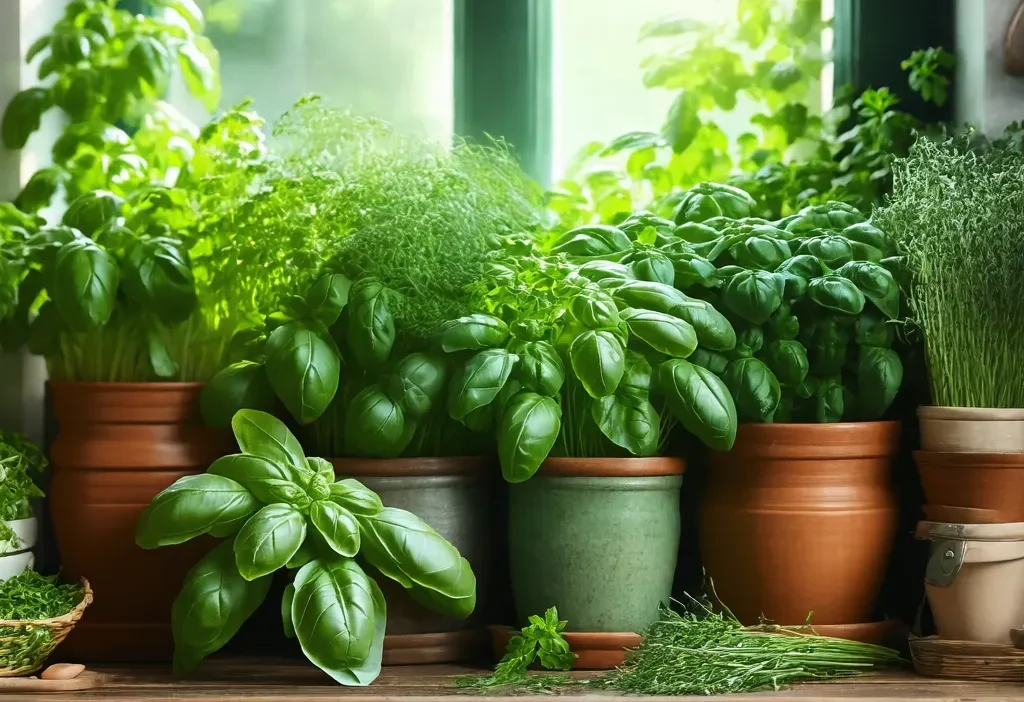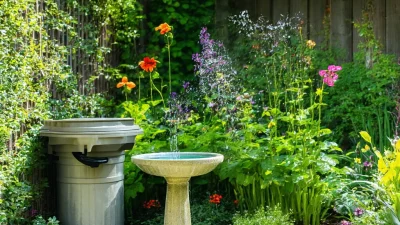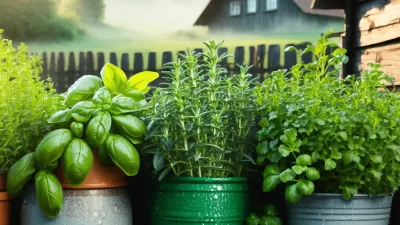Grow Your Own Fresh Herbs Indoors: A Comprehensive Guide
There’s something incredibly satisfying about plucking fresh herbs from your own garden, especially when that garden is right in your kitchen. Growing herbs indoors isn’t just a trend; it’s a practical way to enjoy fresh flavors year-round without depending on the weather. Whether you’re a seasoned gardener or a complete novice, this guide will walk you through everything you need to know to start your own indoor herb garden.
Why Grow Herbs Indoors?
Before diving into the hows, let’s talk about the whys. Growing herbs indoors offers a host of benefits:
- Ease of access: Imagine stepping into your kitchen and snipping fresh basil for pasta or picking mint for tea without ever leaving your home.
- Cost savings: Over time, buying herbs from the store can add up. Growing them yourself is a budget-friendly alternative.
- Freshness and flavor: Store-bought herbs often lose their freshness quickly. Homegrown herbs are picked at peak ripeness, ensuring maximum flavor in your dishes.
- Therapeutic benefits: Caring for plants can be a calming and rewarding hobby, reducing stress and connecting you with nature even when indoors.
Getting Started: What You Need
Starting an indoor herb garden doesn’t require a lot of space or equipment. Here’s what you’ll need:
- Pots or containers: Choose pots with drainage holes to prevent waterlogging. Terracotta pots are ideal as they allow air circulation.
- Quality soil: Use well-draining potting mix designed for herbs or vegetables. Avoid garden soil, which can be too heavy and dense.
- Herb seeds or plants: You can start from seeds or purchase young plants from a nursery. Popular choices include basil, parsley, cilantro, mint, rosemary, and thyme.
- Lighting: Most herbs need plenty of light—around 6-8 hours daily. Place them near a sunny window or invest in grow lights if natural light is limited.
- Watering tools: A watering can with a narrow spout works well for precise watering without disturbing the soil.
- Fertilizer: Use a balanced, water-soluble fertilizer every few weeks during the growing season to keep your herbs healthy and productive.
Best Herbs for Indoor Growing
Not all herbs are created equal when it comes to indoor cultivation. Some thrive in low light and limited space, while others require more attention. Here are some top picks:
- Basil: A staple in Italian cuisine, basil is relatively easy to grow indoors. It prefers warm temperatures and consistent moisture.
- Parsley: Both curly and flat-leaf parsley are excellent choices for indoor gardens. They prefer cooler temperatures and moderate light.
- Cilantro: This herb grows quickly and is perfect for adding zesty flavor to dishes. It needs bright light but doesn’t tolerate overwatering.
- Mint: Known for its refreshing aroma, mint is a hardy herb that can be grown in containers. It spreads rapidly, so it’s best to keep it contained.
- Rosemary: A bit trickier than other herbs, rosemary requires good drainage and moderate humidity. It’s worth the effort for its piney flavor!
- Thyme: This fragrant herb is drought-tolerant and thrives in sunny windowsills.
Maintaining Your Indoor Herb Garden
Once your herbs are planted, it’s essential to maintain them properly to ensure they stay healthy and productive. Here are some care tips:
- Watering: Most herbs prefer soil that’s slightly dry between waterings. Overwatering can lead to root rot, so always check the soil before watering.
- Lighting: Rotate your pots regularly to ensure all sides get equal sunlight. If using grow lights, keep them on for about 12-14 hours daily during the growing season.
- Fertilizing: Feed your herbs with a diluted liquid fertilizer every 2-3 weeks. Avoid over-fertilizing, as it can lead to lush foliage at the expense of flavor.
- Pruning: Regularly pinch back or剪掉枯萎的叶子,促进植物生长并保持其紧凑。这也有助于防止植物长得太茂盛而倒伏。
- Pest control: Keep an eye out for common pests like aphids and spider mites. If you spot them, treat with insecticidal soap or neem oil.
Tips for Maximizing Success
To get the most out of your indoor herb garden, consider these additional tips:
- Start small: Don’t overwhelm yourself with too many herbs at once. Begin with a few easy-to-grow varieties and expand as you gain experience.
- Harvest wisely: Always snip leaves from the top of the plant to encourage bushier growth. Avoid taking more than one-third of the foliage at a time.
- Use fresh herbs immediately: For maximum flavor, use freshly picked herbs right away. If you need to store them, chop and freeze in ice cube trays for later use.
- Experiment with combinations: Try growing different herbs together or pairing them with edible flowers like nasturtiums for a visually appealing display.
Common Mistakes to Avoid
Even experienced gardeners can stumble when it comes to indoor herb gardening. Here are some common pitfalls to watch out for:
- Overwatering: This is the number one mistake beginners make. Always let the top inch of soil dry out before watering again.
- Inconsistent lighting: Herbs need consistent light to thrive. If natural light is inconsistent, invest in a good grow light setup.
- Choosing the wrong herbs: Not all herbs are well-suited for indoor growing. Research your options and choose varieties that will thrive in your conditions.
- Ignoring fertilizer: Herbs need nutrients to grow, but they don’t require heavy feeding. Stick to a light, balanced fertilizer schedule.
Conclusion
Growing herbs indoors is a rewarding and practical way to add fresh flavors to your cooking while connecting with nature in the comfort of your home. With just a little bit of effort and care, you can enjoy a steady supply of aromatic, flavorful herbs all year round. So why wait? Grab some pots, pick out your favorite herbs, and get started on your indoor herb-growing adventure today!





